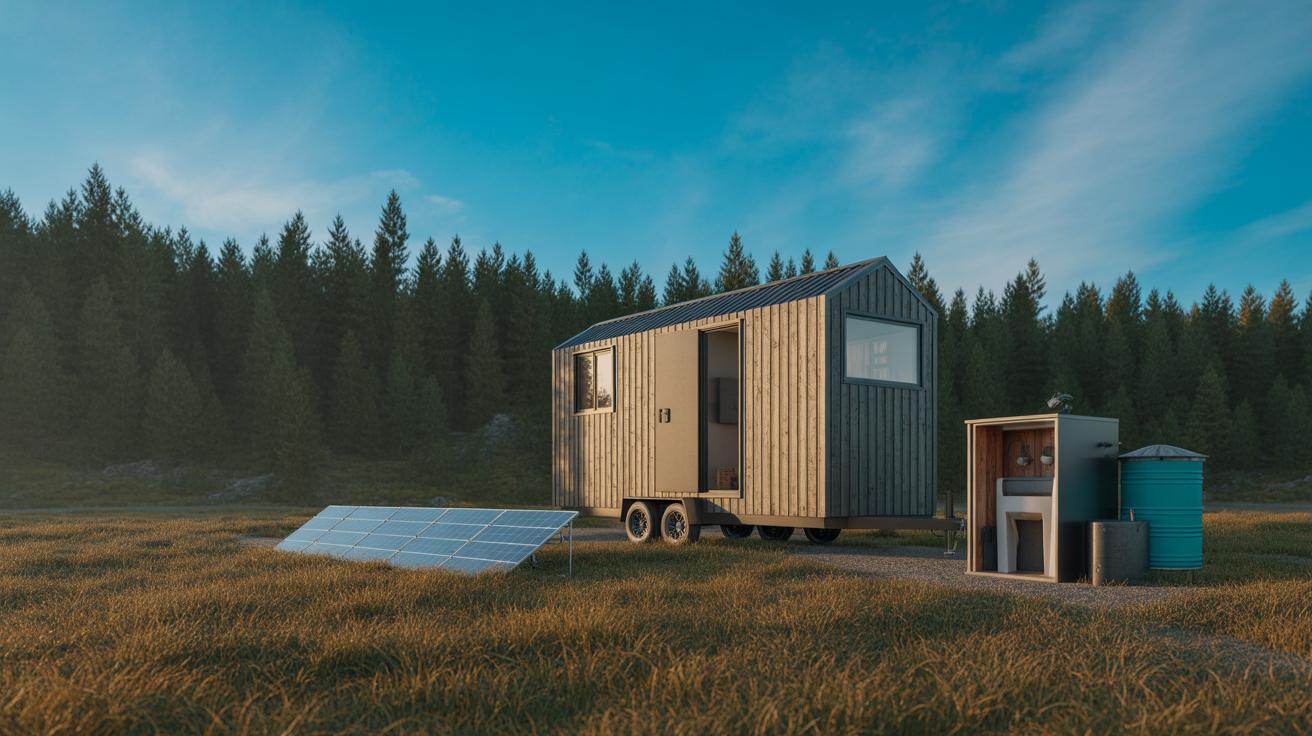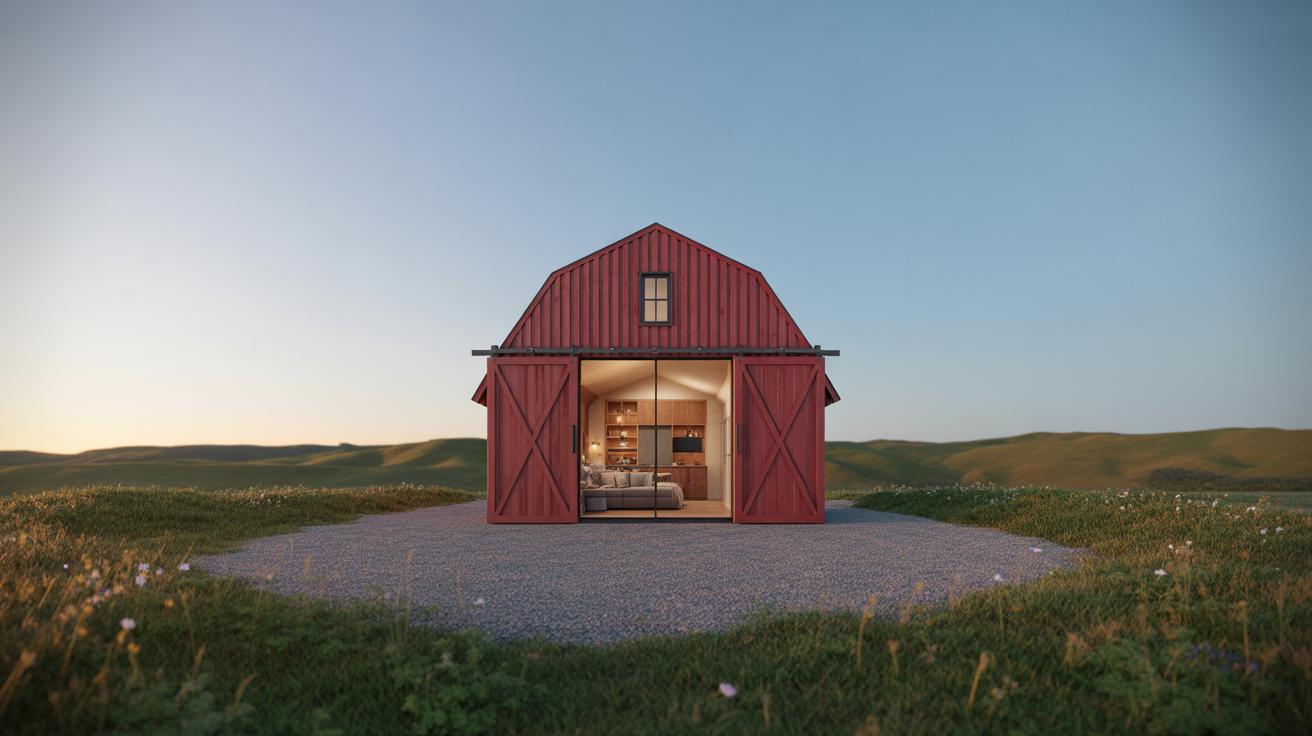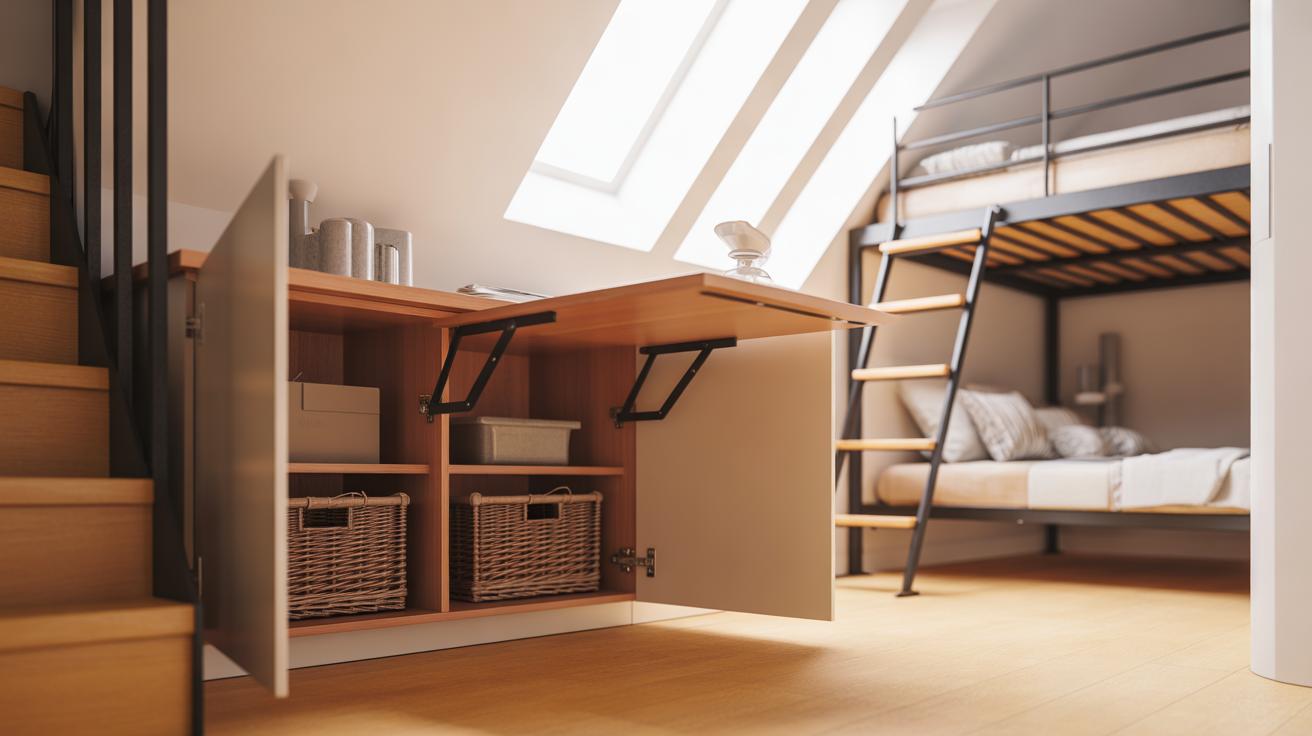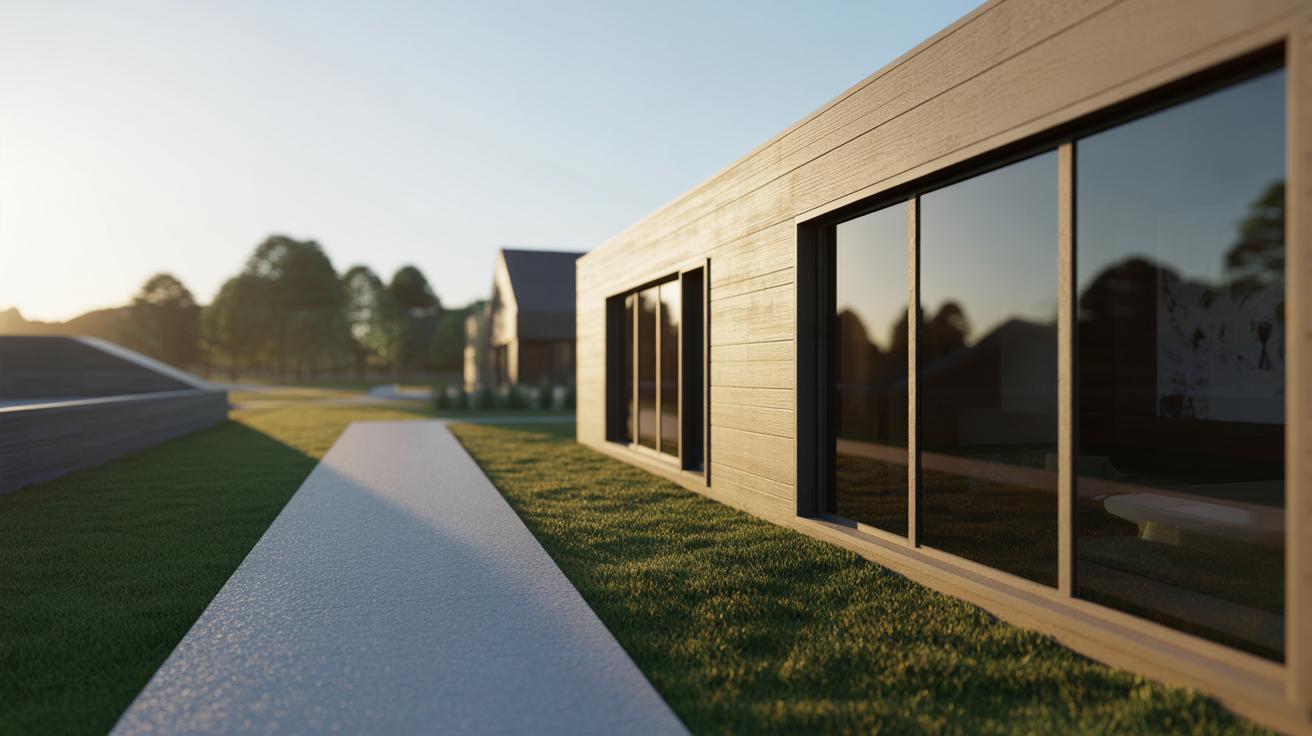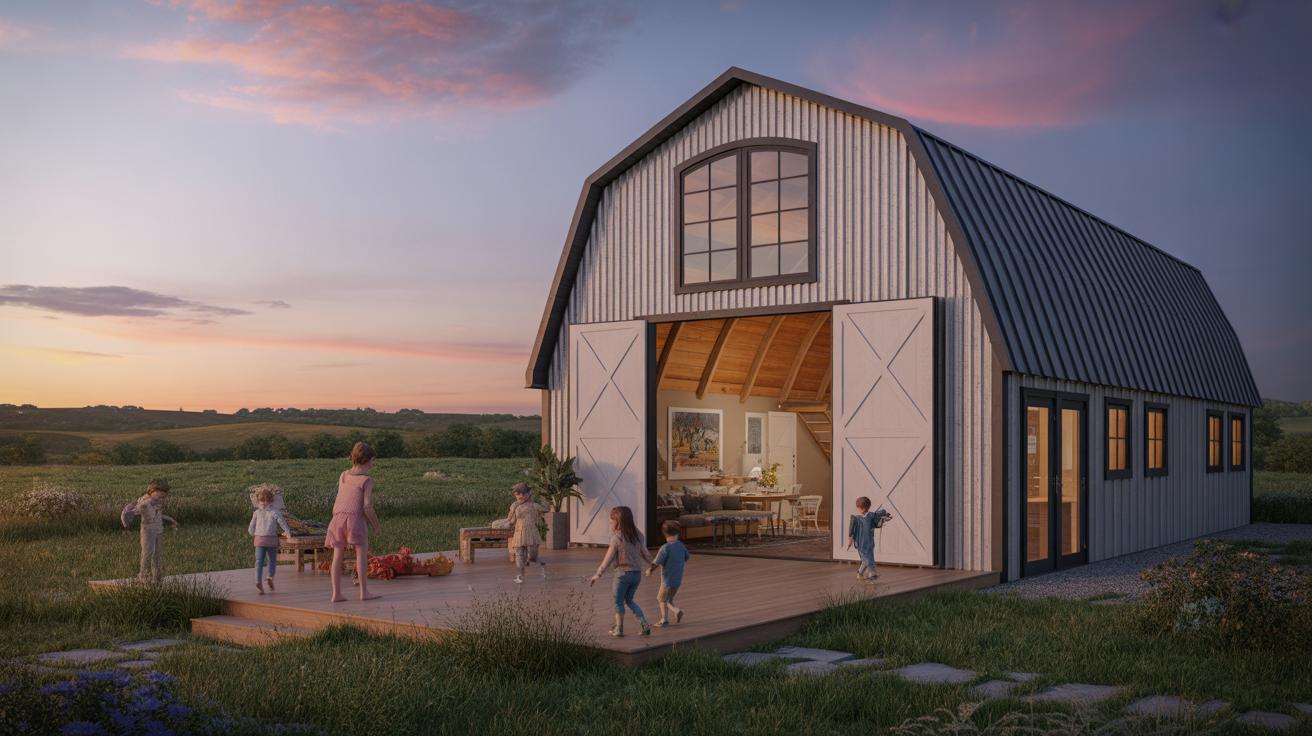Introduction
Small cottage house plans offer a practical and charming solution for those seeking a cozy home that maximizes space and style. These homes suit various lifestyles, from single occupants to small families. Small cottages put focus on efficient use of space, while allowing for personalized touches that reflect the owner’s taste. Their design normally features simple layouts, making construction and maintenance more manageable. Are you interested in downsizing or building a peaceful retreat? Understanding key elements of small cottage designs can guide your choice in floor plans, ensuring your future home meets your daily needs.
Cottages set within garden settings elevate the home’s appeal by blending indoor and outdoor living spaces. Garden cottages often include inviting outdoor patios or verandas, and window placements that optimize views and sunlight. They are ideal for individuals who appreciate nature close to home and desire a tranquil environment. Planning a small cottage with garden integration involves selecting plans that enhance the garden atmosphere while providing shelter and comfort inside. What features do you want in your garden cottage to create a serene lifestyle? Exploring different designs and landscaping ideas will help you create a harmonious cottage experience.
Understanding Small Cottage House Plans

Small cottage house plans focus on designing cozy homes that fit within a limited space while maximizing comfort and function. These plans aim to balance living needs with a charming look that blends well with garden settings. Many feature simple rooflines, compact footprints, and welcoming porches that connect indoor and outdoor spaces. You will find open floor layouts that make rooms feel larger and promote better flow.
Practical considerations include efficient use of every square foot, choosing materials that complement the garden, and ensuring natural light fills the home. Small cottages often encourage thoughtful storage solutions and multi-purpose areas. You might ask yourself what features are essential for your lifestyle and how much space feels comfortable without clutter. These plans suit people wanting a simpler lifestyle and a home that feels part of nature.
Benefits of Smaller Home Designs
Smaller homes keep building and upkeep costs lower than larger houses. You spend less money and time on heating, cooling, and cleaning. This makes owning a home easier to manage for busy people or those on a budget.
Energy use drops because smaller homes require less power and use fewer materials in construction. This creates a smaller carbon footprint and helps protect the environment. You might think about how often you use all the space in a bigger house and if smaller living could fit your needs better.
Smaller homes also fit well in garden settings, letting you enjoy outdoor space without feeling overwhelmed by a big building. They invite you to focus on quality over quantity in your living space and belongings.
Typical Features in Small Cottage Plans
Small cottages typically include steep, simple roofs with dormer windows for light and attic space. Floor plans often feature one or one-and-a-half stories, with a combined living and dining area to maximize open space. Bedrooms and bathrooms are close together to reduce hallway space and improve convenience.
You will see space-saving ideas like built-in shelves, fold-down tables, and hidden storage under stairs or window seats. Some designs use the porch or deck as an extra living area, expanding usable space without enlarging the footprint.
Think about how you move through your current home. Could adding a nook or integrating storage under seats help reduce clutter? These common traits shape small cottages into efficient homes that work hard for your daily life without overwhelming your garden or budget.
Planning Your Small Cottage Layout

Consider how you live day to day before designing your cottage layout. What rooms do you use the most? Do you need space for guests, a home office, or storage for gardening tools? Think about your priorities and how much space each function requires.
Start by listing essential rooms such as the kitchen, bathroom, and sleeping area. Determine if you need a separate dining space or if it can share a room with the living area. Space in a small cottage is limited, so plan carefully to keep the flow smooth and avoid cramped spaces.
Look at the shape and size of your plot in the garden to decide where the cottage fits best. Consider sunlight, outdoor views, and privacy. Positioning rooms so they open to the garden can enhance your living experience.
Assessing Your Needs and Priorities
Write down what you need from your cottage. Ask yourself which rooms must be private and which can be open. For example, if you work from home, your office needs quiet and good lighting. If you love cooking, make the kitchen large enough to be functional.
Rank your rooms by importance. Essential areas such as a bedroom and bathroom should get more space. Guest rooms or storage can be smaller or combined with other uses. Deciding what matters most will help you organize your plan without wasting space.
Maximizing Space Efficiently
Use open-plan designs to combine living, dining, and kitchen areas. This reduces walls and creates a spacious feel. Built-in shelves and cabinets free up floor space and keep things tidy.
Think about furniture that serves multiple purposes, like a sofa bed or a fold-out table. Sliding doors save space compared to swinging ones. Consider vertical storage options—for example, hooks and shelves on walls—to keep floors clear.
Can you design a nook for reading or gardening tools within an existing room? Small changes can turn underused corners into valuable spots that make your cottage both cozy and practical.
Design Elements Enhancing Cottage Appeal
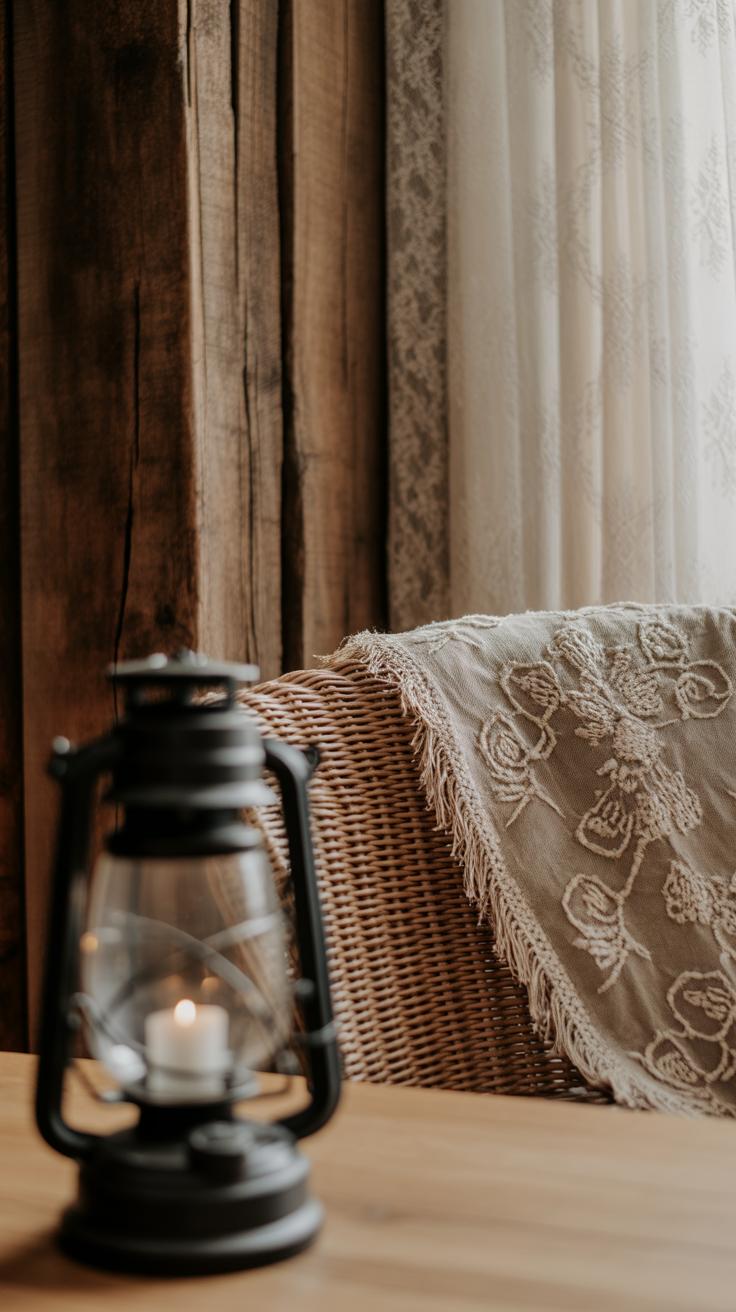
Small cottages stand out when their design balances charm with functionality. Roofing plays a key role; simple gable or shed roofs help direct rain and snow away, protecting your home while adding classic character. Steeper roof pitches also increase attic space and give a taller, more inviting profile. Consider overhangs for shade and to keep rain from reaching walls.
Windows shape the look and feel of your cottage. Grouped or multi-paned windows bring a vintage touch, while modern styles can still work when sized thoughtfully. Window size and placement affect how much light and air flow inside. Materials like wood or metal frames add texture and support durability.
Choosing the right materials supports both beauty and lasting use. Wood brings warmth and fits well in garden settings, while brick and stone offer sturdiness and natural texture. Mixing materials can create visual interest. Ask yourself how each element helps your cottage fit with the surrounding landscape and your daily needs.
Choosing Exterior Materials and Colors
Wood, brick, and stone suit small cottages well for their natural look and strength. Wood gives you flexibility to paint or stain in soft, earthy tones or brighter shades. Brick offers rich texture and deep reds or browns that blend with soil and foliage. Stone carries ruggedness and colors from gray to warm tan that connect your home to natural elements.
Focus on colors that blend with your garden and sky. Soft greens, warm beiges, and gentle blues often work well. Using muted shades keeps the cottage feeling calm and unobtrusive in its setting. Bright colors can highlight trim or doors without overpowering the scene.
Think about maintenance too. Wood requires regular care to resist weather damage, while brick and stone usually need less upkeep. Which materials fit your lifestyle and how much time you want to spend on your home’s exterior?
Window Placement and Natural Light
Windows provide more than views; their location shapes your daily comfort. Place windows on opposite walls to create cross-ventilation, refreshing air without mechanical cooling. Taller windows near seating or dining areas bring light where you enjoy most.
Grouping windows near corners opens up sightlines and links indoor spaces to the outdoors. Consider windows near garden paths or favorite plants to connect with nature. Skylights in steep roofs can brighten darker rooms and add ventilation options.
How much sunlight does your cottage need in the morning or afternoon? South-facing windows deliver warmth and light during winter, while shading controls heat in summer. Thoughtful window design improves comfort, saves energy, and makes your cottage feel larger and more inviting.
Integrating Garden Settings with Cottage Plans

Small cottages feel more inviting when they connect naturally to their garden surroundings. You can design windows and doors that face green spaces, bringing in sunlight and fresh air. Consider placing your living areas where you can enjoy views of blooming flowers or leafy trees. Using natural materials that match the garden tones can help your cottage blend in rather than stand out.
Your cottage layout should encourage a smooth transition from inside to outside. Think about how you will move between rooms and the garden. Should there be a direct door to the patio, or a path leading you gently into the yard? These choices shape a calm and peaceful atmosphere that helps you unwind every day.
Planning Outdoor Spaces Adjacent to Your Cottage
Patios, decks, and verandas become extra rooms when planned well. You might extend your indoor living areas by adding a wooden deck with comfortable seating. A veranda with a roof gives you shade and shelter, so you can enjoy fresh air even in light rain or hot sun.
Arrange your outdoor furniture to encourage relaxation or socializing. Adding a gate or low fence can define this space without blocking the view of your garden. Think about how you will use your outdoor space—will it be for dining, reading, or growing potted plants? Your choices will shape your time spent outside.
Landscaping Ideas to Complement Small Cottages
Choose plants that suit the size of your garden and the local climate. Low-maintenance shrubs or flowers that bloom throughout the seasons keep your garden lively without much work. A narrow flower bed with herbs or colorful perennials can add scent and beauty near your house.
Paths made of stone or wood chips guide visitors through your garden, creating interest and movement. Small water features, like a birdbath or fountain, bring soothing sounds that enhance your sense of calm. How can natural details around your cottage improve your everyday experience? Thoughtful landscaping brings your outdoor space to life.
Customization Options for Cottage Homes

Small cottage house plans offer many ways to fit your unique lifestyle and preferences. You can adjust the layout by adding or removing rooms based on your needs. For example, you might expand the kitchen for cooking or add a cozy reading nook. Think about how you live and what features matter most. Do you want an open floor plan or more privacy between spaces?
Storage solutions like built-in shelves or under-stair drawers can make a big difference in small spaces. You can also customize windows for better lighting or add skylights to brighten interiors naturally. These choices help create a home that works specifically for you.
Personalizing your cottage can reflect your hobbies or family size, such as including a craft room or a guest bedroom. What changes would make your daily life easier?
Interior Customizations to Fit Your Style
Your cottage’s interior sets the tone for comfort and charm. Choose colors that create the mood you want. Soft pastels or earth tones often highlight a cozy feel, but don’t hesitate to pick bold hues in small doses. For example, a deep navy accent wall can add depth.
Fixtures also shape the atmosphere. Vintage-style lighting fixtures or simple, clean-lined modern pieces can both work well, depending on your preference. Consider materials like wood or brushed metal for warmth and texture.
Furniture should fit both the space and your habits. Compact, multi-purpose pieces like fold-out tables or storage benches save room and enhance comfort. Would you prefer a rustic wooden dining set or sleek minimalist chairs?
Exterior Adjustments for Unique Look
The outside of your cottage creates first impressions and ties the design to its garden setting. Altering porch size or shape can add personality. A wraparound porch invites outdoor living, while a small stoop keeps it simple.
Roof styles greatly affect appearance. Options include gable roofs for a classic look or shed roofs for a modern twist. You might also choose roofing materials like cedar shingles or metal panels to suit climate and style.
Garden structures such as pergolas or trellises integrate your home with the landscape and add charm. These can be customized with climbing plants or lighting to extend your living space outdoors. How will your cottage stand out from the rest?
Benefits of Small Cottages in Urban and Rural Areas
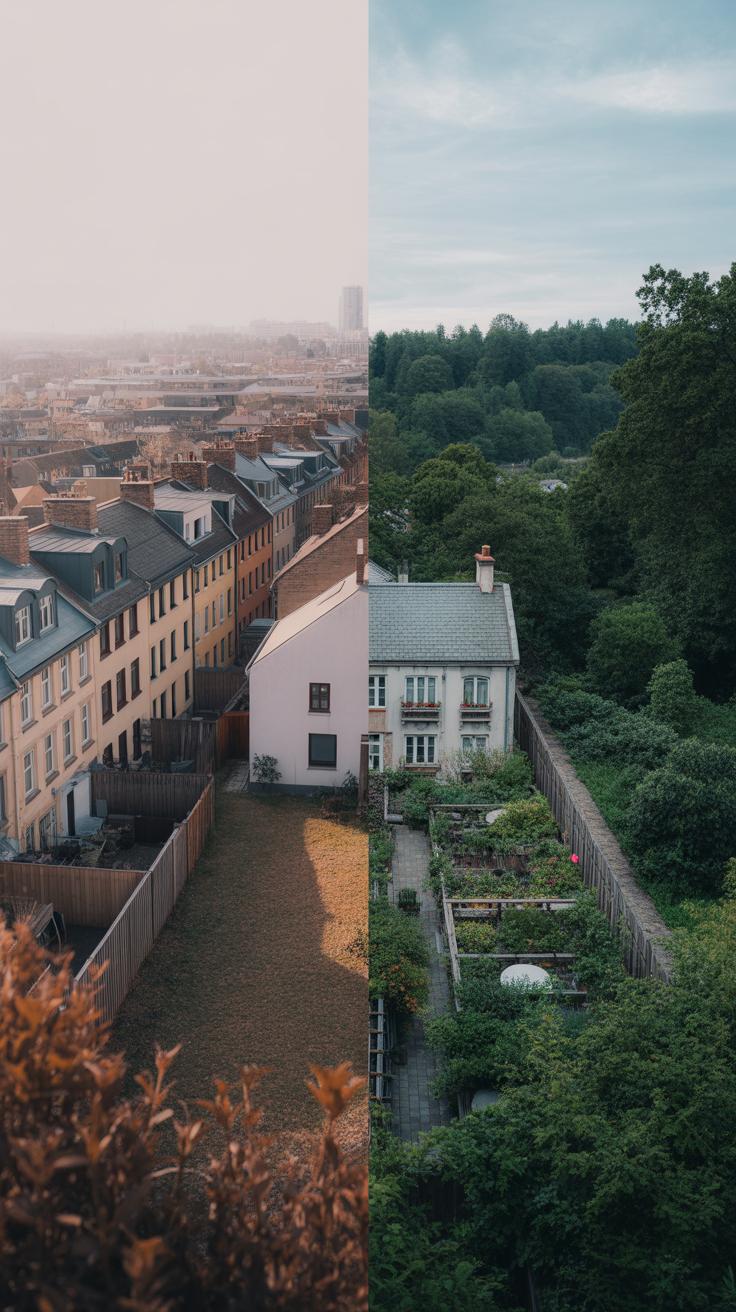
Small cottages offer unique benefits whether you place them in a busy city or open countryside. In urban areas, these homes make the most of limited space. You can fit a cozy, efficient house onto a small city lot. This helps reduce your footprint while still providing a private retreat from the noise and pace of urban life. Such cottages often bring a calm, focused living space close to work, shops, and amenities. How could a small footprint improve your city living experience?
In rural settings, small cottages blend naturally with larger gardens and open land. You gain peaceful surroundings and room for outdoor activities, growing plants, or raising animals. The connection between the house and nature encourages a slower, more mindful lifestyle. In the country, a cottage acts as a comfortable base for enjoying fresh air and wildlife. Could embracing a simpler home in nature help you restore balance in life?
Small Cottages in Urban Spaces
Urban environments challenge you to live well on tighter plots. Small cottages answer this challenge by using space smartly. Their compact design often includes multi-purpose rooms and clever storage solutions. This creates an inviting home without wasted space. Many urban cottages have outdoor areas like patios or small courtyards. These spots extend your living area and offer a peaceful escape. Would creating a private garden corner in the city change how you unwind after a busy day?
Also, small cottages fit well within diverse neighborhoods. They maintain the character of older streets or complement new developments. Their size helps keep property costs and maintenance manageable. This makes urban homeownership more accessible. If you wanted a simpler urban lifestyle, how might a small cottage protect your peace in the heart of the city?
Country Cottages and Garden Integration
Cottages in rural areas typically come with more land. This extra space lets you design a garden that suits your lifestyle. You can plant vegetables, flower beds, or create shaded sitting areas. The close relationship between your home and yard encourages outdoor living. Imagine stepping from your kitchen into an herb garden or sitting outside to enjoy sunrise views. How might living so close to your garden change your daily routine?
Natural surroundings add another dimension to country cottages. Trees, birds, and open skies increase your sense of freedom and calm. The small scale of the cottage fits gently into this landscape, avoiding disruption. This balance between house and nature often improves well-being. Would you consider a garden-focused cottage if your ideal home included fresh air and open spaces every day?
Building Your Small Cottage Home

Choosing the Right Builder and Materials
When hiring a builder, look for someone with experience in small home construction. Ask to see past projects to make sure their style matches your vision. Small cottages often require creative use of space, so find a builder who understands efficient layouts and cozy designs.
Sustainable materials fit well with garden settings. Consider wood from certified forests, recycled bricks, or natural stone. These materials can last long and blend with nature. They also reduce environmental impact and may save you money on energy costs. Does your builder suggest eco-friendly options? Compare prices and durability before deciding.
Managing Costs and Timelines
Create a detailed budget that covers materials, labor, permits, and unexpected expenses. Small cottages often cost less to build, but custom features may increase prices. Check local building regulations early to avoid permit delays. How long will each stage take? Set realistic deadlines and stay in regular contact with your builder to track progress.
Breaking the project into steps helps control spending. For example, complete the foundation before buying finishes. This prevents overspending and lets you adjust if needed. Time and cost management can keep your project on track and reduce stress as you build your perfect small cottage home.
Maintaining Your Small Cottage and Garden
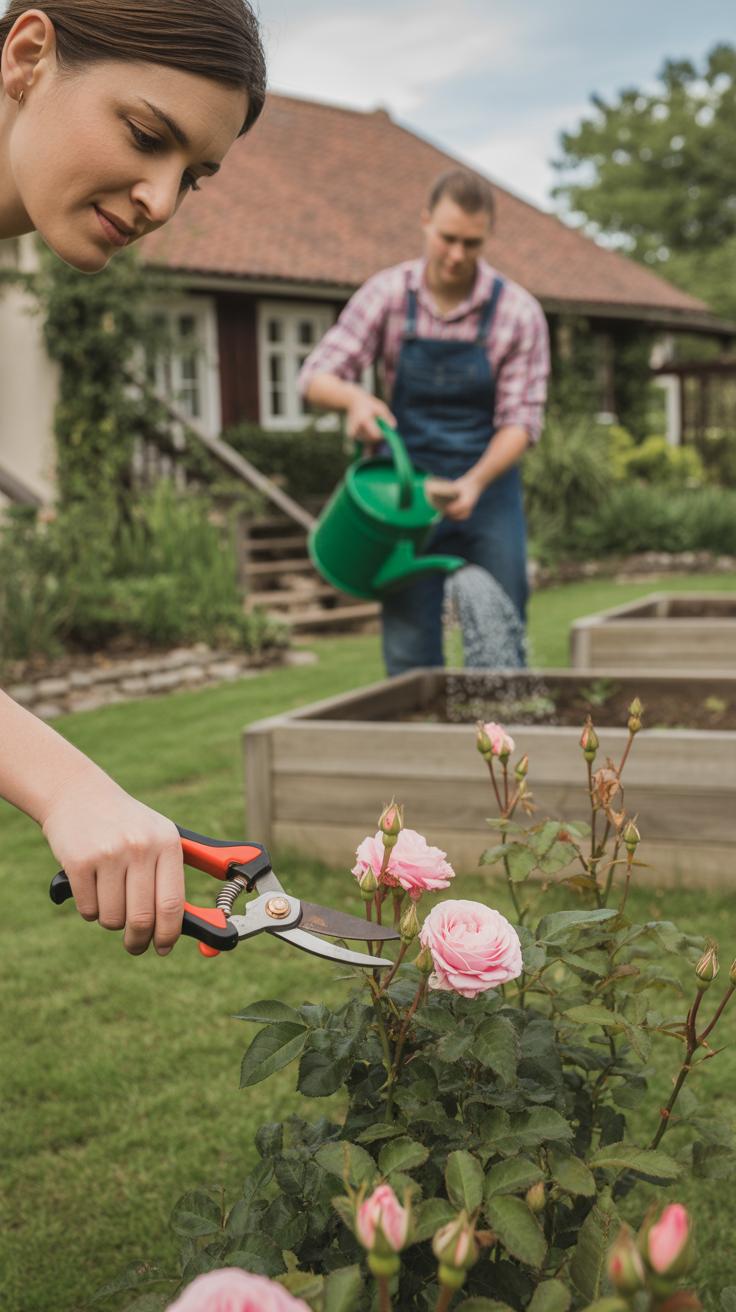
Keeping your small cottage and garden in good shape takes regular attention. You want both spaces to look inviting and work well over time. Do you have a simple routine to spot wear or minor issues early? Small repairs done quickly prevent bigger problems later. Regular upkeep helps preserve the charm and function of your cottage and garden.
Routine Home Maintenance Tips
Check your roof at least twice a year. Look for missing or damaged shingles that could cause leaks. Clean gutters to prevent water buildup. Paint protects your cottage’s wood siding and trim. Inspect the paint every few years and touch up chips or cracks. Keep door and window frames sealed against drafts. Repair any broken screens or loose boards right away. These small tasks keep your home safe from weather and pests. What fixes could you do today before they turn costly?
Garden Care and Seasonal Upkeep
Garden health depends on smart care throughout the year. Water plants early morning or late evening to reduce evaporation. Prune dead branches and spent flowers to encourage new growth. Mulch beds in spring and fall to keep moisture in and weeds down. Change your fertilizer with the seasons to meet plant needs. Clear fallen leaves in autumn to avoid mold or pests. Keep garden paths tidy and edges trimmed for neatness and safety. Which gardening chores fit best into your weekly schedule?
Living in Your Small Cottage

Living in a well-planned small cottage within a garden setting offers a calm and focused lifestyle. Your daily routine becomes simpler without the distractions of excess space or clutter. Each room has a clear purpose, making it easy to find what you need and relax. The garden surrounds your home, giving you natural beauty just outside your door. This presence of nature can make everyday tasks like cooking or reading more enjoyable.
Consider how your mornings might start with fresh air and sunlight filtering through windows. Afternoons might include tending to plants or enjoying meals outdoors. The limited space encourages you to prioritize comfort and functionality, helping create a peaceful environment. What small changes can you make in your cottage to suit your daily needs better? Living here invites you to slow down and focus on what matters most.
Enjoying Space and Comfort
Small cottages often feel cozy, but that doesn’t mean you have to sacrifice comfort. Clever designs maximize space, giving you room for essential furniture and storage. Multipurpose areas can shift easily from work to relaxation zones. For example, a fold-out table might serve as a dining spot and workspace. Built-in shelves or hidden compartments help keep your space tidy.
You might find that living in a compact area encourages you to own fewer things and make smarter choices. Soft lighting and comfortable seating invite you to unwind after a busy day. Does your layout allow easy movement and natural light? Comfort in small cottages comes from thoughtful design that matches your lifestyle while maintaining a warm atmosphere.
Building a Connection to Nature
Your garden becomes more than decoration; it plays a key role in daily well-being. Spending time among plants can reduce stress and improve focus. The sights, sounds, and scents of your garden offer a natural way to refresh your mind. Many people report feeling happier and more relaxed after just a few minutes outdoors.
Imagine stepping outside in the morning to water flowers or listening to birds while sipping your coffee. These small moments can boost your mood and create a sense of renewal. How often do you make time to enjoy your garden space? Creating easy access to nature through your cottage design supports mental health and a better quality of life every day.
Conclusions
Cottages with smaller footprints present unique opportunities for personalized, efficient homes that connect well with garden spaces. By selecting the right small cottage house plan, you ensure that every square foot serves a purpose. Design elements such as open floor plans, multi-use spaces, and thoughtfully placed windows can enhance your comfort and enjoyment. Your home can feel spacious without being large, saving on energy and maintenance costs. Could this be your approach to simplified living, where quality replaces quantity in your living environment?
Incorporating a garden setting into your small cottage plan enriches your living experience with natural beauty and serenity. Gardens invite a healthy lifestyle and increase curb appeal that benefits both you and your community. Take the time to reflect on how indoor-outdoor connections, such as patios or garden views, align with your daily routines. Small cottage house plans offer both versatility and charm. Your ideal home does not have to be big to be perfect—it just needs to be well planned and fit your vision for comfortable, enjoyable living.



